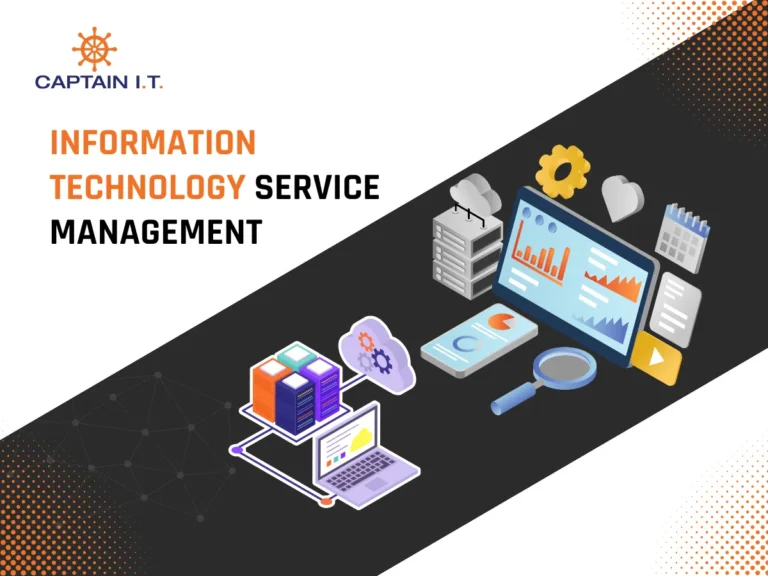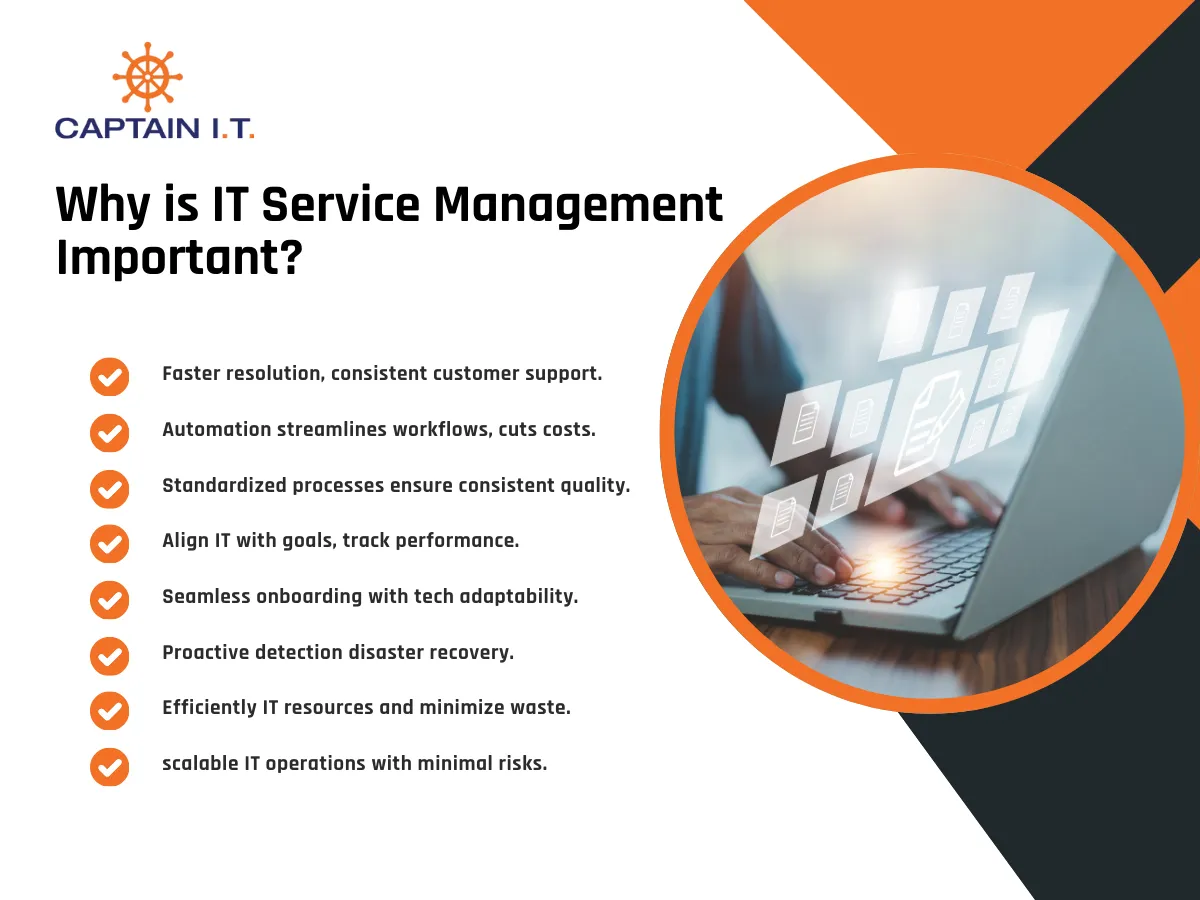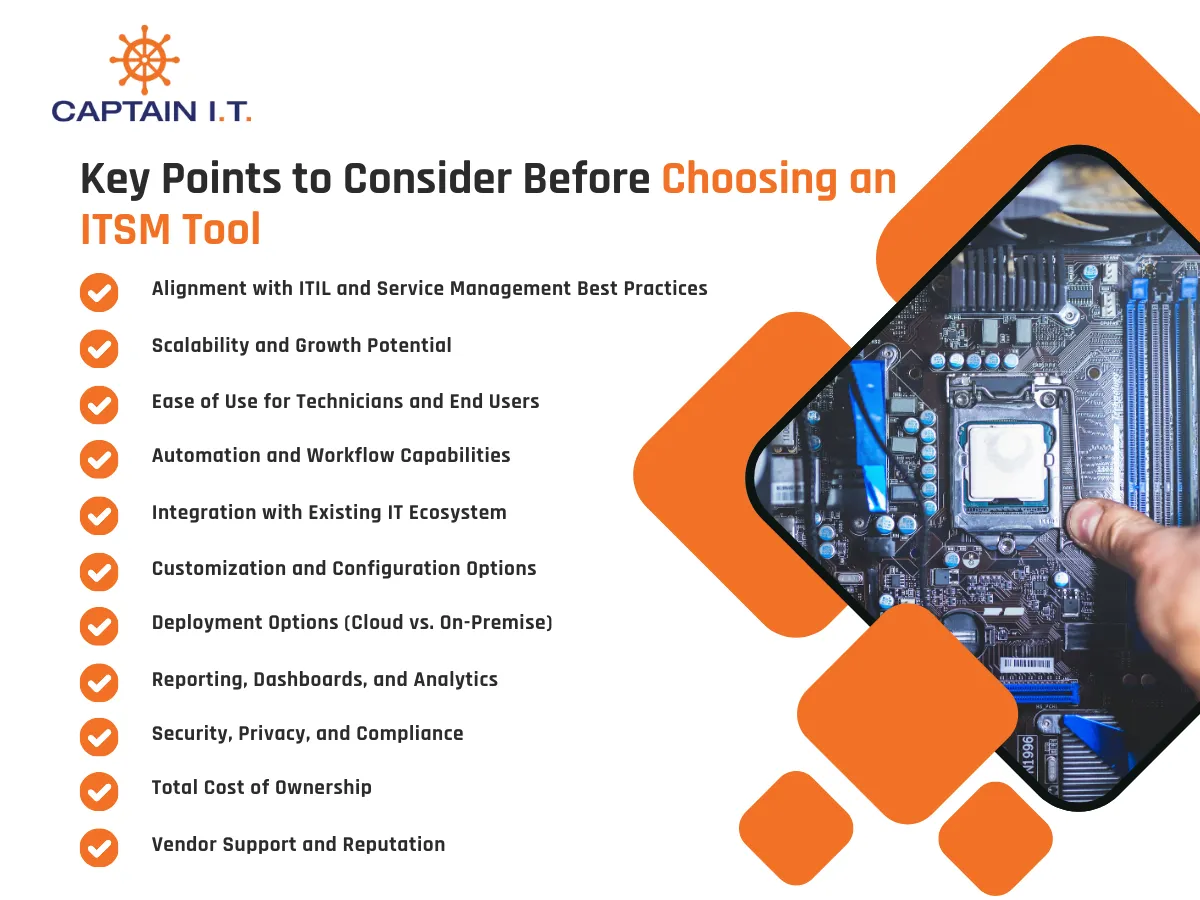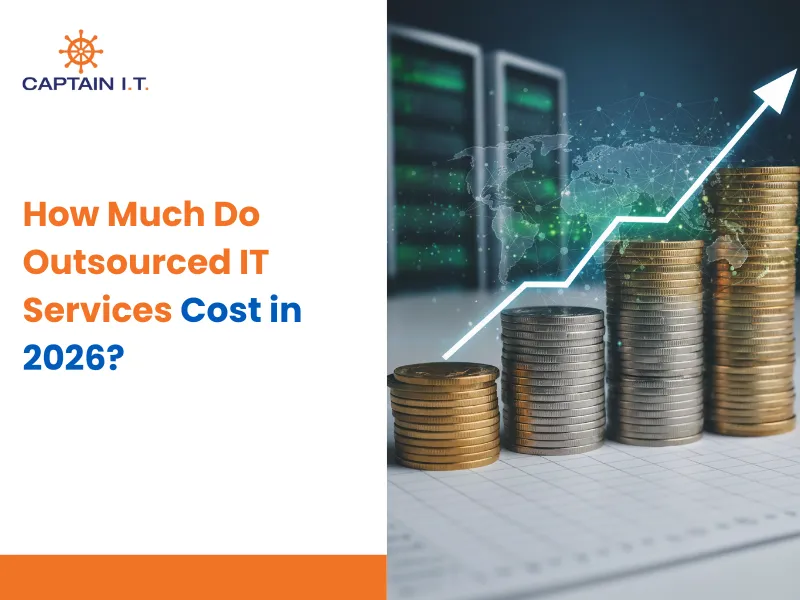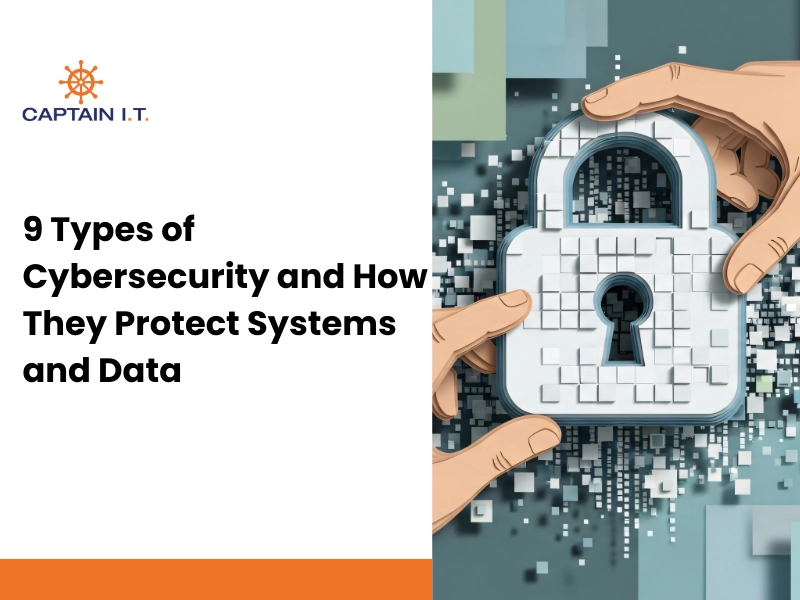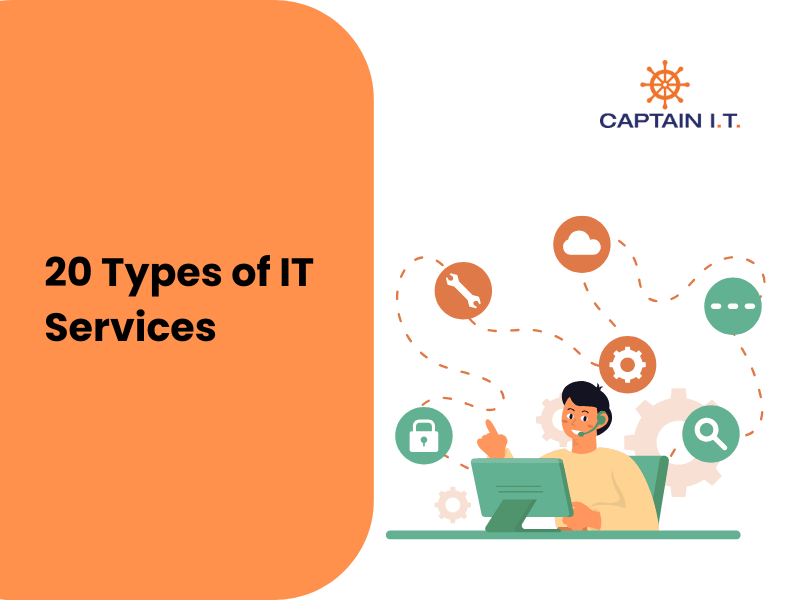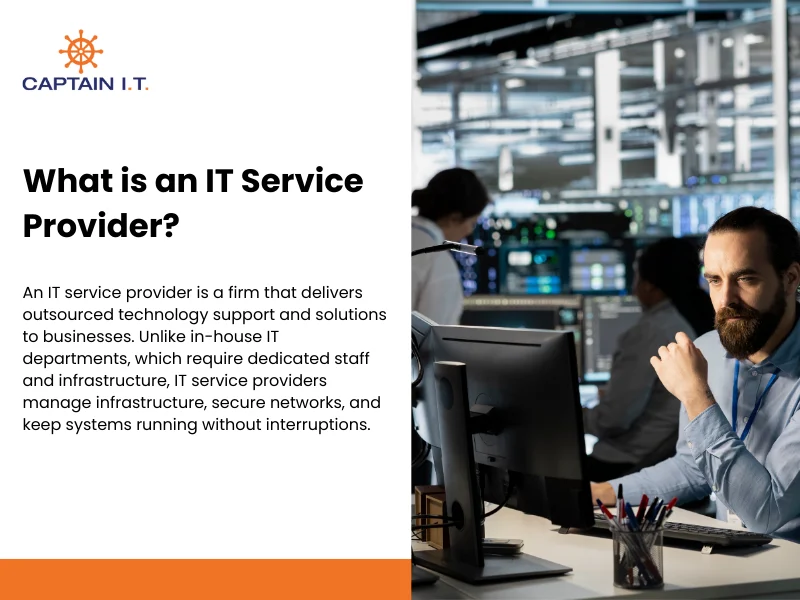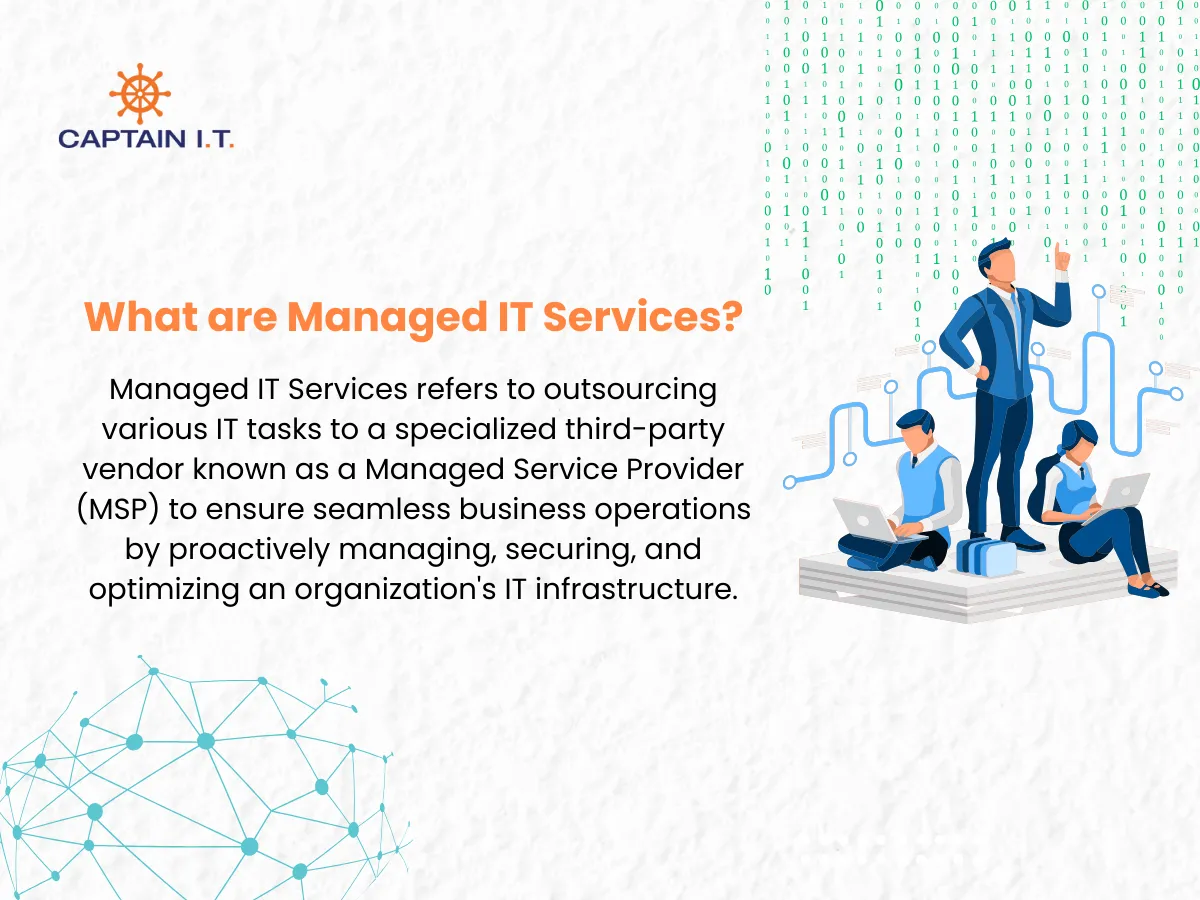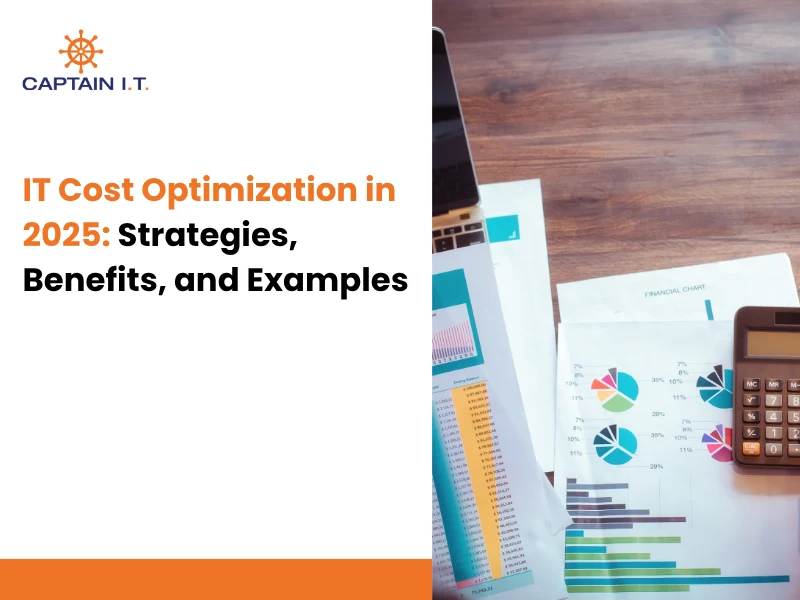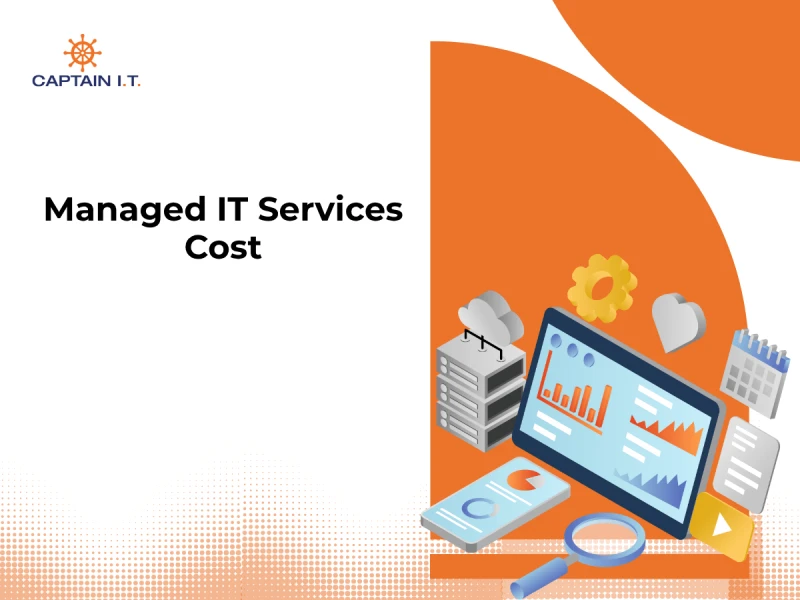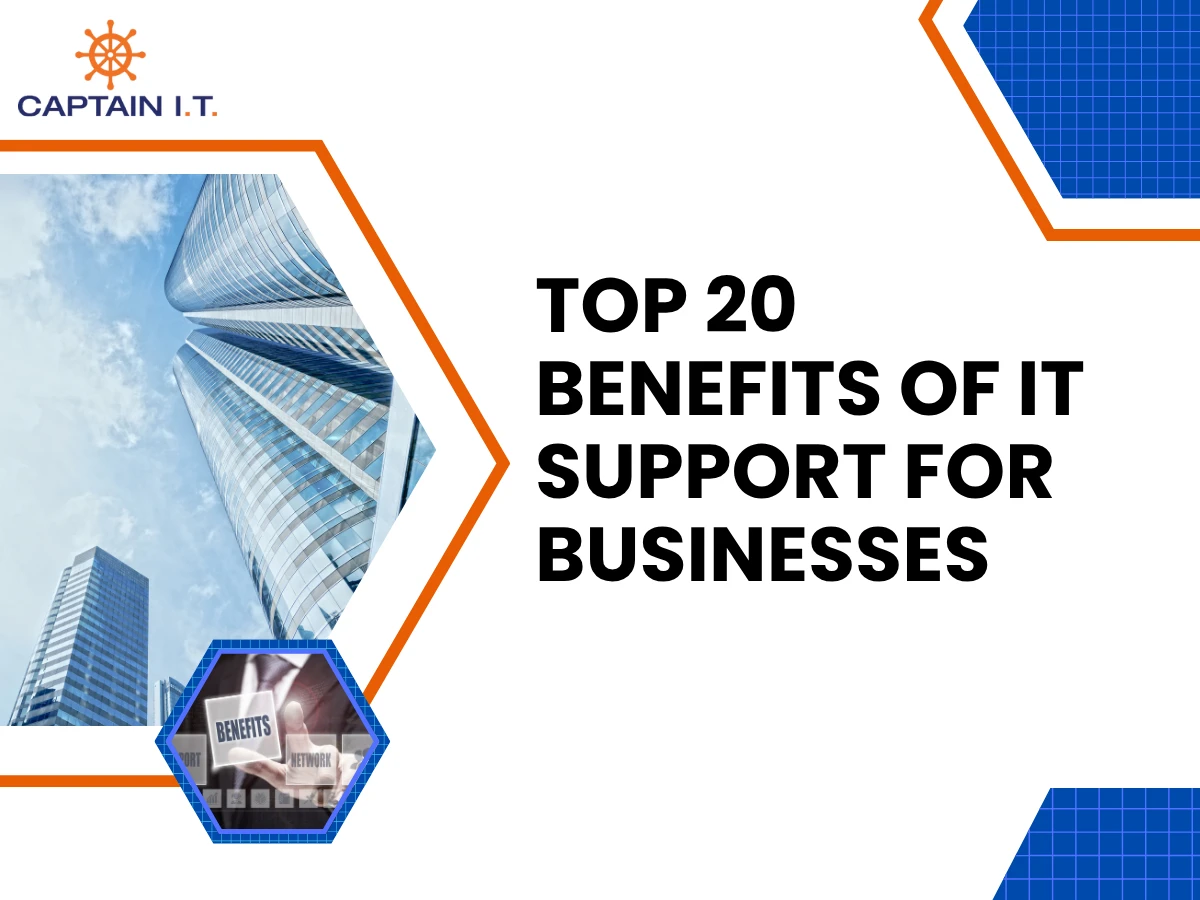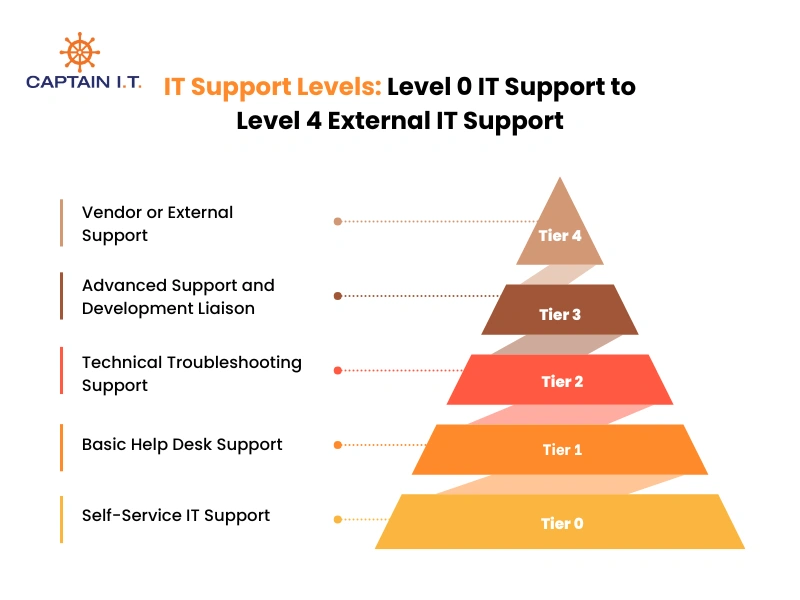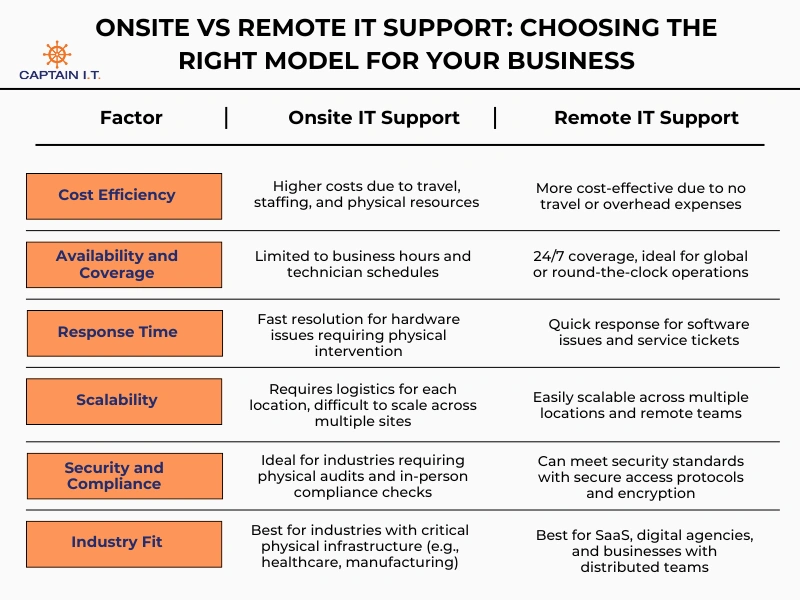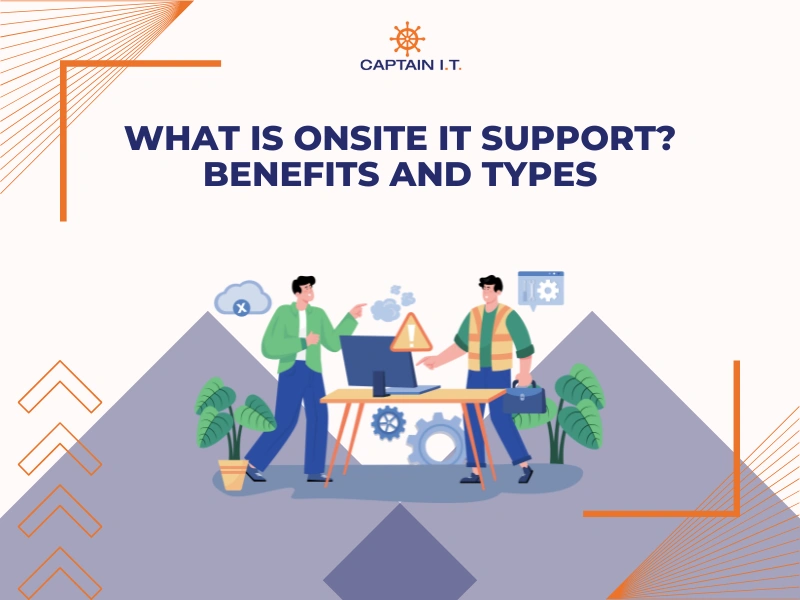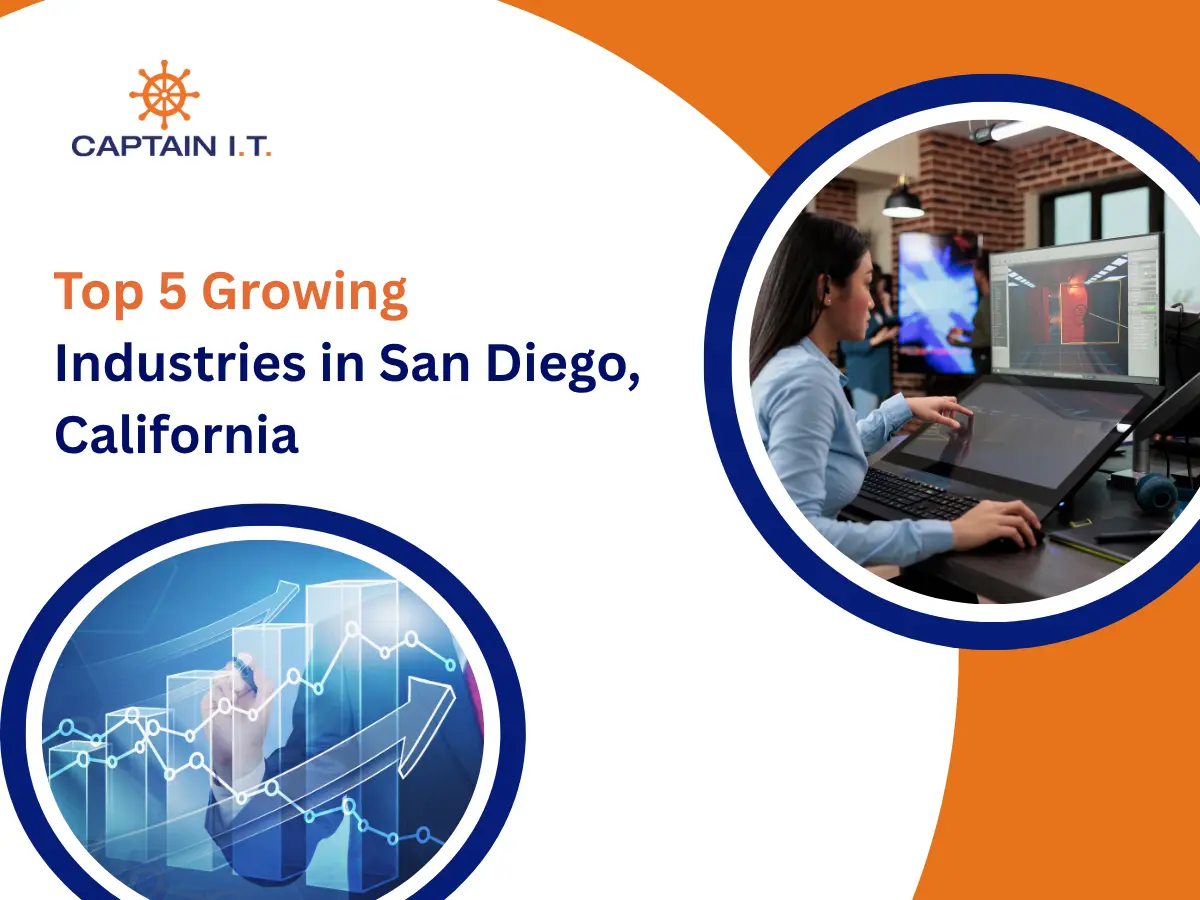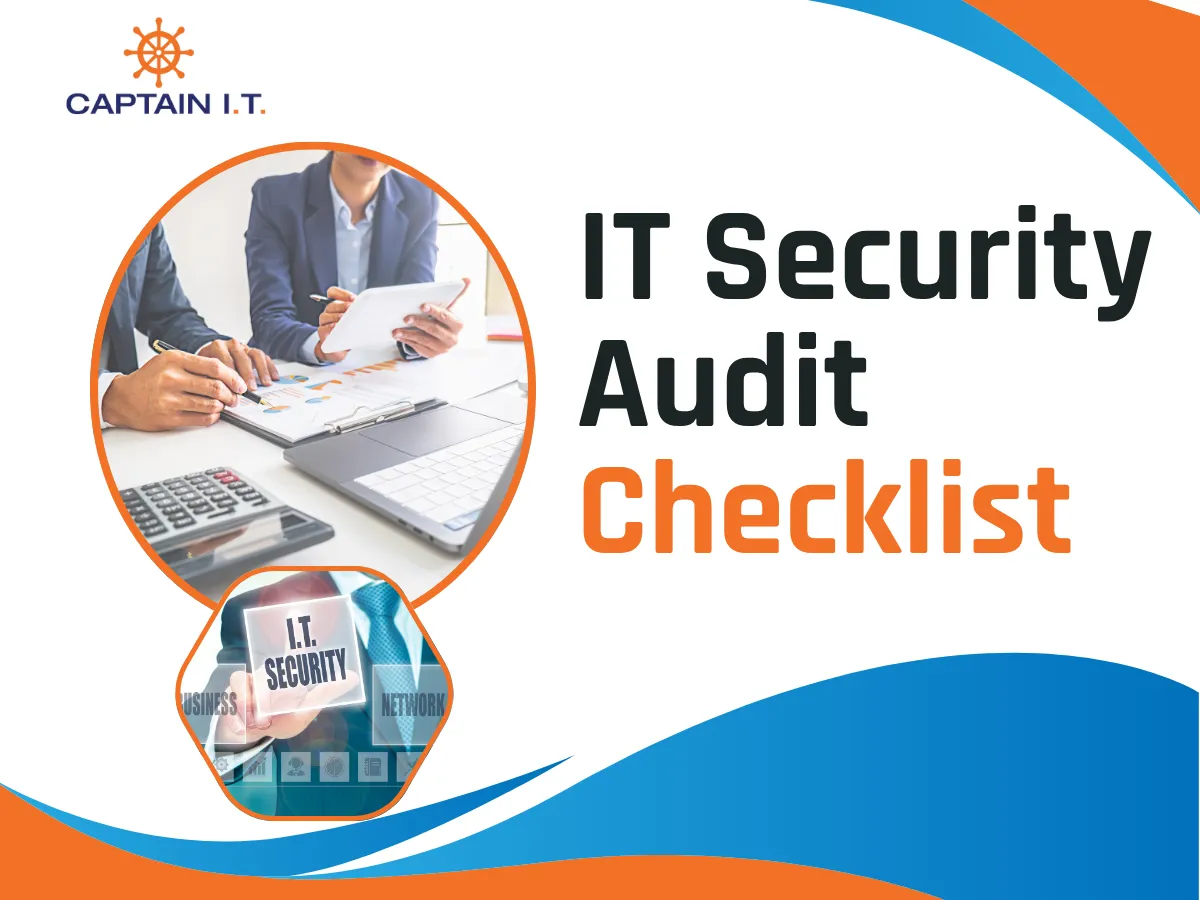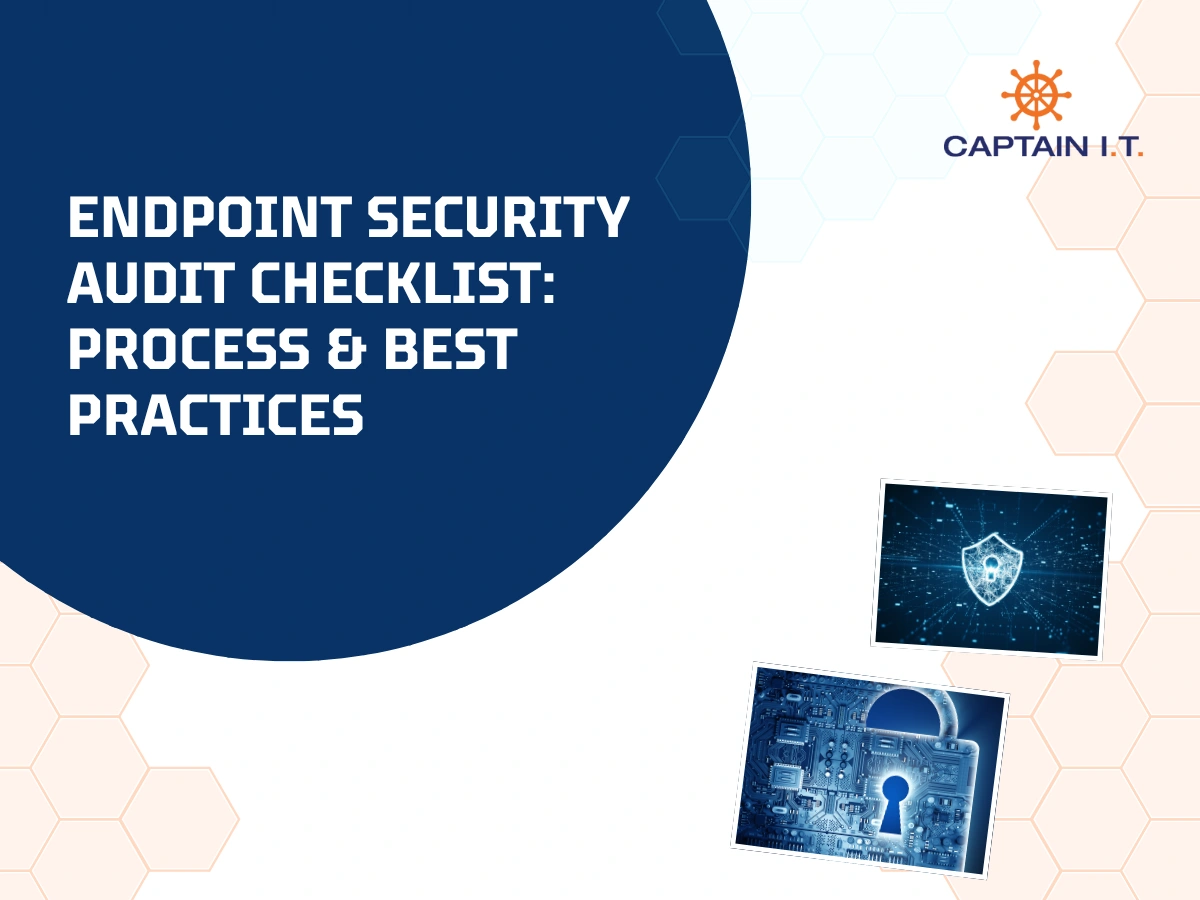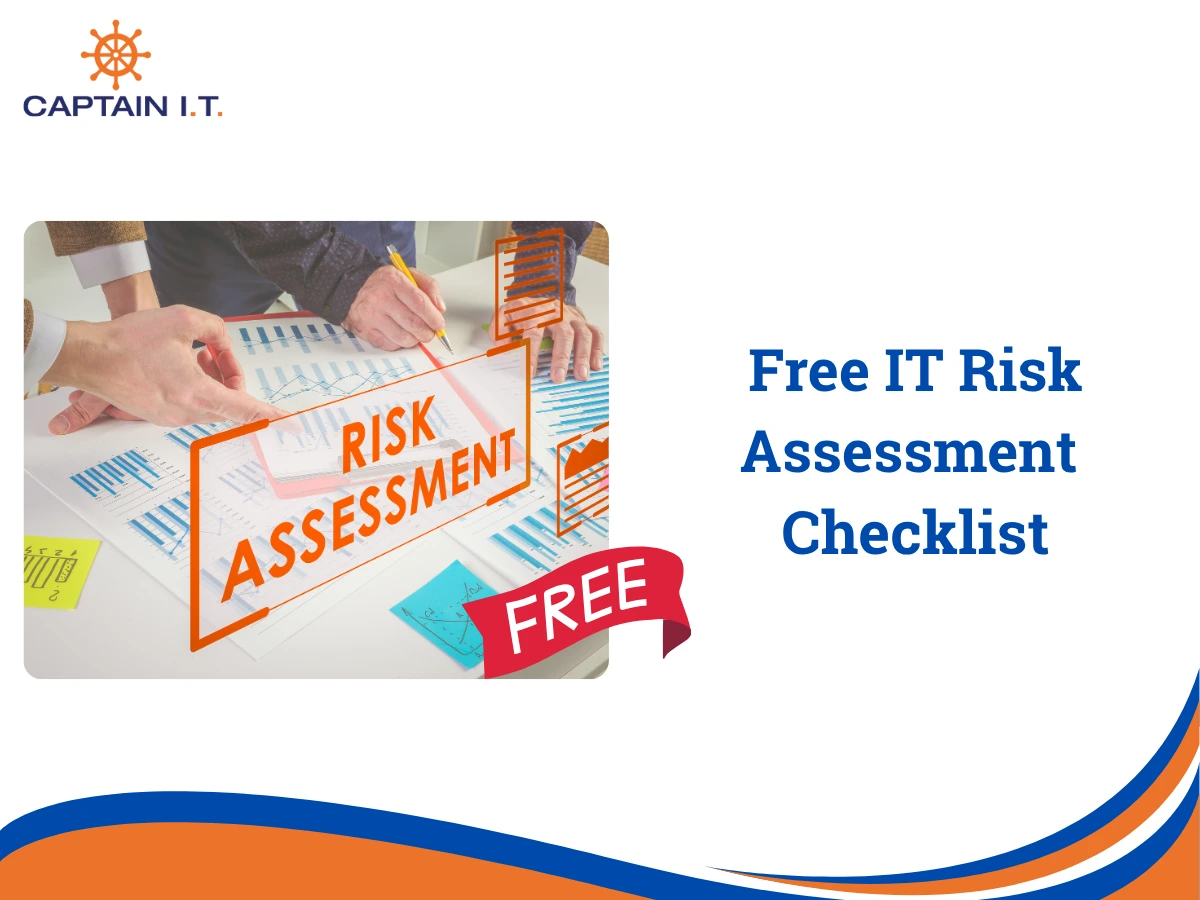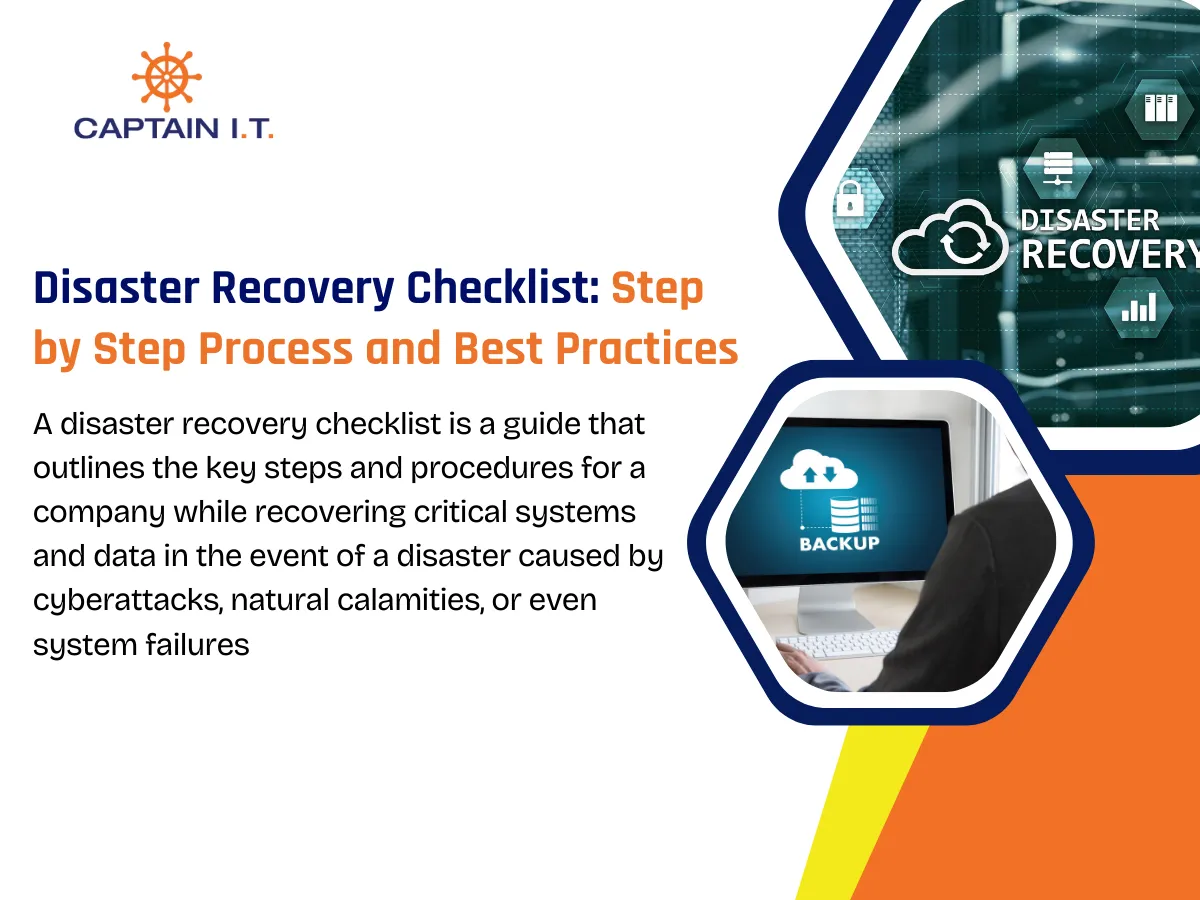ITSM is a process through which the IT teams manage the delivery of IT services to end users. It helps organizations design, deliver, manage, and consistently improve IT services for customers and internal users. By focusing on process standardization and best practices, ITSM enables businesses to meet user expectations, minimize disruptions, and align technology operations with organizational goals.
At its core, ITSM is built around three critical pillars: effective service delivery, enhanced customer satisfaction, and continuous improvement. Instead of reacting to problems as they arise, ITSM promotes a proactive, lifecycle-based approach where services are planned, monitored, and optimized over time. This strategic focus not only improves daily operations but also strengthens the organization’s ability to adapt to change and innovate faster.
Organizations that implement ITSM successfully transform IT from a basic support function into a driver of business value. Through better collaboration, clear accountability, and data-driven decision-making, ITSM empowers IT teams to deliver high-quality experiences, reduce operational costs, and continually refine services to support long-term growth and competitive advantage.
Why is IT Service Management Important?
ITSM is important to deliver reliable, efficient, customer-centric, and cost-effective IT services that align information technology with business strategies. By implementing structured processes and frameworks, IT Service Management helps reduce operational disruptions, provide consistent IT services, improve user satisfaction, and drive organizations towards continuous improvement. It also streamlines business operations, reduces costs and risks, boosts productivity, increases response times, and ensures better resource allocation across departments.
Below are the 8 key reasons highlighting the importance of ITSM.
- Improves incident resolution speed and provides consistent support for enhanced customer satisfaction.
- Automates repetitive tasks and streamlines workflows to reduce operational costs.
- Standardize processes and reduce variability in service outcomes for improved service quality.
- Ensure proper alignment of IT operations with business objectives and performance tracking against KPIs for strategic decision-making.
- Smooth onboarding of new services with great adaptability to new technologies, including cloud computing, AI, and IoT.
- Reduces downtime by proactively detecting and addressing root causes while also ensuring readiness of disaster recovery and continuity planning.
- Efficiently uses IT resources to minimize waste and avoid service redundancies.
- Promotes scalability of IT operations with minimal risks and without compromising quality.
What Are The Different ITSM Frameworks?
The different ITSM frameworks are ITIL, DevOps, TOGAF, COBIT, eTOM, MOF, ISO/IEC 20000, and FitSM. An ITSM framework is a structured set of guidelines, best practices, and processes essential for managing and delivering IT services.
MSPs, small and medium-sized businesses (SMBs), enterprises, and different industries (healthcare, retail, public sector, educational institutions) reliant on technology use these frameworks to align IT services with business goals.
These structured models offer standardized methodologies that ensure well-coordinated, scalable, and customer-oriented IT management and processes. Adopting a suitable framework allows IT teams to conduct service operations efficiently while meeting compliance needs for risk management.
ITIL (Information Technology Infrastructure Library)
Popularly known as the most widely adopted ITSM framework, ITIL provides a lifecycle-based approach that covers service strategy, design, transition, operation, and continual improvement. It focuses on delivering high-quality IT services through standardized best practices that improve risk, change, and incident management while aligning IT services with business needs. Driven by the goal of increasing service delivery efficiency while reducing management costs, ITSM is suitable for enterprises of all sizes aiming for industry best practices.
Below are the key features and purpose of the ITIL framework:
- Enhances customer experience through alignment of IT services with business needs.
- Encourages efficiency and predictability through repeatable processes.
- Performs 24/7 monitoring for continuous improvement.
- Follows a modular approach that offers flexibility to adapt industry best practices based on organizational size and maturity.
DevOps
Following a collaborative methodology, DevOps integrates software development (Dev) with IT operations (Ops) for faster and more reliable service delivery. With a focus on automation, communication, and continuous integration and delivery (CI/CD), it reduces deployment errors while accelerating innovation. The primary target is to shorten the software development lifecycle and deliver reliable and high-quality software.
The primary features and purpose of DevOps are listed below:
- Faster software development and time to market with minimal risk.
- Promotes cross-functional collaboration and shared responsibilities for better quality and faster development.
- Automates testing, integration, deployment, and monitoring processes to ensure code quality.
- Enhances scalability and agility in rapidly evolving IT environments.
TOGAF (The Open Group Architecture Framework)
Prominently used for designing, planning, implementing, and governing IT enterprise architecture, TOGAF provides a comprehensive architecture development model that helps organizations align IT strategies and capabilities with overall business objectives. Supporting large, complex organizations through modular planning, TOGAF improves efficiency by reducing duplication and inefficiencies in IT systems. It also streamlines risk management by identifying gaps and risks in existing architectures.
The key features and purposes of TOGAF are as follows:
- Utilize the Architecture Development Method (ADM) to guide system design.
- Use structured planning for enhancing business efficiency.
- Supports interoperability and integration of technology systems.
- Provides governance tools for strategic planning, such as architecture compliance reviews, capability maturity models, and decision matrices.
COBIT (Control Objectives for Information and Related Technologies)
Developed by ISACA (Information Systems Audit and Control Association), COBIT is a governance and management framework that ensures the responsible usage of IT resources for achieving business goals. Designed to ensure compliance, manage risks, and create value from IT investments, this ITSM framework provides organizations with the necessary principles, practices, analytical tools, and models.
Released in 2018, the most recent version of COBIT (COBIT-19) is based on six core principles, including:
- Meeting Stakeholder Needs
- Covering the Enterprise End-to-End
- Dynamic Governance System
- Customized to enterprise needs
- Enabling a Holistic Approach
- Separating Governance from Management
Similarly, the working basis and key features of COBIT are:
- Identifies and mitigates IT-related risks while ensuring regulatory compliance.
- Offers detailed controls and audit criteria for IT processes.
- Uses KPIs and metrics to monitor and measure performance.
- Defines roles, responsibilities, and accountability structures.
eTOM (enhanced Telecom Operations Map)
A business process framework developed by the telecommunications industry (TM Forum), eTOM provides a detailed reference model that standardizes all processes required for delivering and supporting telecom services. It covers areas like customer relationship management, service delivery, network management, enterprise management, and operations. eTOM serves as the standard for best practices in the telecom business, similar to how ITIL forms the foundation of best practices for the IT industry.
Here are the key features of the eTOM framework:
- Structured into multiple levels of process areas, including Strategy, Infrastructure, and Product (SIP), Operations (OPS), and Enterprise Management (EM).
- Supports interoperability with other frameworks like ITOL and COBILT.
- Aids in benchmarking and performance improvement.
- Encourages agility and automation in service delivery.
MOF (Microsoft Operations Framework)
Developed by Microsoft, MOF is a set of operational, governance, management, and compliance guidelines, principles, and best practices for managing IT services and operations in a Microsoft-based environment. It follows a structured lifecycle approach to help organizations effectively plan, deliver, operate, and support IT solutions. This ITSM framework is applicable for IT teams and organizations looking for a lightweight, practical framework to integrate operations, governance, and risk management.
For better understanding, below are the significant features and the purpose of MOF:
- Emphasize governance, risk, and compliance in Microsoft ecosystems.
- Offers detailed role-based responsibilities.
- Covers end-to-end IT service management, from conception to retirement.
- Built-in practices for assessing and managing operational risk.
ISO/IEC 20000
First published in 2005 and later revised in 2018, ISO/IEC 20000 is an international standard created for ITSM by the International Organization for Standardization/International Electrotechnical Commission (ISO/IEC). This framework highlights the requirements for implementing and improving service management systems (SMS) to deliver quality IT services. It ensures consistent and quality services and adherence to compliance for enhanced customer satisfaction.
Some essential features defining the ISO/IEC 20000 are discussed below:
- Provides a certifiable benchmark for service management quality.
- Ensure consistent delivery of services matching the agreed SLAs.
- Covers incident, change, and configuration management, among others.
- Enables continual process improvement through regular assessments.
- Provide compliance with globally recognized standards.
FitSM (Federated IT Service Management)
Focusing on the essentials of ITSM, FitSM is a lightweight, open IT service management that offers a practical, accessible framework for organizations of all sizes. Especially beneficial for small to mid-sized businesses (SMBs) or those beginning their ITSM journey, FitSM provides a simplified and pragmatic approach to managing IT services for easy adoption. It removes the complexity and overhead associated with larger frameworks like ITIL.
Crucial features and purpose of FitSM that one should know are given below:
- Designed for quick implementation and minimal overhead.
- Divide ITSM into manageable parts, such as incident and problem management.
- Encourages documentation-light practices for speed and agility.
- No expensive certifications or extensive training are needed.
- Provides a learning curve for adopting bigger frameworks.
What Is The Difference Between ITSM And ITIL?
ITSM refers to the overall practice of managing IT services, while ITIL is a specific framework that follows a particular guideline for implementing ITSM effectively. ITSM is a discipline that falls under the broad umbrella of ITSM. To clarify further, an organization can practice ITSM without ITIL. Adopting ITIL is a procedure for standardizing and improving service management processes systematically.
| Aspect | ITSM (IT Service Management) | ITIL (Information Technology Infrastructure Library) |
| Definition | The broad practice of managing and delivering IT services. | A specific framework (set of best practices) for implementing effective ITSM. |
| Scope | Encompasses all strategies, processes, and tools for IT services. | Focuses on a structured approach to managing IT services. |
| Purpose | To ensure effective and efficient IT service delivery. | To guide organizations in implementing ITSM practices. |
| Origin | Evolved naturally as businesses and IT needs grew. | Developed by the UK Government’s CCTA (Central Computer and Telecommunications Agency) in the 1980s. |
| Methodology | Varies based on the organization’s needs and goals. | Follows a defined lifecycle model from strategy to improvement. |
| Focus Areas | Service management, delivery, optimization, and improvement. | Specific and detailed, with best practice recommendations. |
| Flexibility | Adaptable across different frameworks and models. | Specific and detailed, with best practice recommendations. |
| Standards/Frameworks | Implemented through frameworks like ITIL, COBIT, ISO/IEC 20000, and FitSM. | ITIL is a framework supporting ITSM; it’s not a standard like ISO. |
What Are the Most Important ITSM Processes?
The most important ITSM processes are incident, problem, change, service request, configuration, service level, release, and security management. Forming the core structure of high-quality service management and efficient IT resource handling, these processes ensure effective service delivery, system stability, and continuous alignment of IT operations with business objectives. Mastering these key processes enables organizations to enhance user satisfaction, minimize risk, and continuously improve.
Incident Management
Managing incidents involves getting IT services back up and running as quickly as possible to minimize business impact. A responsive incident management process means less downtime and more business flow. Efficient incident handling builds trust and organizational resilience.
Problem Management
Problem management is about identifying and fixing the root cause of incidents to prevent recurring problems. By removing the underlying fault, businesses get more stability and long-term service quality. This proactive approach creates a more resilient IT environment.
Change Management
The main agenda of change management is to introduce modifications to IT systems in a controlled and structured way with minimal disruption. It allows organizations to evolve while keeping operational security. Good change practices reduce risk and ensure service continuity.
Service Request Management
Fulfilling user service requests efficiently is about delivering IT services quickly, so routine services can be streamlined. It separates the simple, repeatable tasks from incident management to keep productivity high. Faster request fulfillment means happier users across the enterprise.
Configuration Management
Configuration management helps to keep IT assets and their relationships updated to support service quality. Accurate asset data helps with faster incident resolution and better change planning. A good configuration system is the foundation of good IT.
Service Level Management (SLM)
SLM is focused on ensuring IT services align with the agreed service levels by defining, monitoring, and managing service quality. It holds people accountable by setting clear expectations between service providers and users. Good SLM practices build client trust and service transparency.
Continual Service Improvement (CSI)
The core of CSI is to drive ongoing improvements across IT services and processes. It uses real-world performance data to find gaps and opportunities. A strong CSI culture is key to organizational innovation and agility.
Release Management
Release management plans, tests, and deploys IT changes to ensure new services or updates are delivered without disruption. It bridges development and operations by coordinating safe and timely releases. Consistent release management reduces risk and accelerates value.
Availability Management
Ensuring IT services are available and operational when the business needs them is the role of availability management. It designs infrastructure to reduce downtime and increase service reliability. Good availability practices are business critical.
Capacity Management
Capacity management ensures appropriate IT infrastructure scaling to meet current and future business needs without unnecessary spending. Forecasting and planning resource needs prevent bottlenecks and downtime. Best practice capacity management means cost-effective service delivery.
Security Management
Protecting IT environments from internal and external threats is the main focus of security management. It provides a structured layer of defense around data, systems, IT infrastructure, and applications. Strong security practices reduce risk and build user trust in digital services.
Knowledge Management
Knowledge management captures, structures, and shares information to give IT teams and users quick and easy access to IT solutions. Reducing troubleshooting time increases productivity and decision-making. A well-organized knowledge base drives consistent service excellence.
Service Desk
The service desk is the front line between IT and users, managing communication, support requests, and service disruptions. It centralizes support, improves the user experience, and increases operational efficiency. A responsive service desk is the foundation of smooth IT service delivery.
What Are The Best ITSM Tools And Software?
The best ITSM tools and software available in 2025 are BMC Helix, ServiceNow, Freshservice, Jira Service Management, SysAid, and TOPdesk. These purpose-built platforms help manage IT services effectively by automating workflows and enhancing service delivery across the enterprise.
Below is a curated list of the top 10 ITSM tools and software, along with their unique functionalities and common use cases.
- BMC Helix ITSM: An AI-powered ITSM solution that combines predictive service management with cognitive automation. BMC Helix provides multi-cloud-enabled and intelligent ticket routing, proactive problem management, and self-service capabilities, ideal for larger enterprises that rely heavily on advanced automation and scalability.
- ServiceNow: A widely adopted cloud-based platform for delivering end-to-end digital workflows across IT, HR, and customer service. Mostly popular for its powerful integration and modularity, ServiceNow supports incident, problem, change, and asset management with extensive customization. It is best suited for businesses that need enterprise-grade automation and digital transformation.
- Cherwell Service Management: Suitable for SMBs requiring flexible and cost-effective licensing, Cherwell is a codeless platform for ITSM that offers quick customization without tech complexities. This tool aligns ITIL capability with change management, request fulfillment, and configuration management.
- Freshservice: Developed by Freshworks, Freshservice has a modern interface for quick setup and user-friendly service management. It also features AI-powered automation, a self-service portal, and asset discovery. This ITSM software is appropriate for small to medium IT teams looking for a simple and low-overhead solution.
- Jira Service Management: Developed by Atlassian, Jira Service Management brings DevOps and ITSM together for faster incident resolution and continuous delivery. Suitable for change management and tightly integrated with Jira Software, so good for agile development environments and DevOps teams.
- Ivanti Service Management: Ivanti has a robust ITSM suite with self-healing, automation bots, and IT asset management. It features a modular design that supports IT, facilities, HR, and more under one platform, making it befitting for organisations looking to consolidate service delivery across departments.
- SysAid: An all-in-one ITSM platform with automated ticket routing, patch management, and real-time analytics. Built-in remote desktop access and IT asset tracking. Suitable for IT departments looking for fast deployment and out-of-the-box functionality.
- ManageEngine ServiceDesk Plus: Applicable for IT teams that need full ITSM with strong budget control, ManageEngine is an ITIL-ready help desk software that covers ticketing to CMDB, and asset management. Supports on-premise and cloud deployment with advanced reporting and workflow automation.
- SolarWinds Service Desk: A cloud-based solution known for its ease of use and powerful reporting, SolarWinds contains AI-powered ticket categorization, service catalogs, and risk-based change evaluation. It is ideal for businesses that want to improve visibility and compliance in their IT operations.
- TOPdesk: Suited for organizations that require cross-department service collaboration, TOPdesk supports IT, facility, and HR service management on a unified platform. Renowned for its user-friendly design, this ITSM tool excels in knowledge sharing, self-service portals, and an omnichannel support system.
What Are IT Service Management Best Practices?
Best practices for ITSM include adopting the ITIL framework, clearly defined SLAs, automation, provision of self-service, establishment of change management, and implementation of a customer-oriented approach. These standardized strategies help organizations improve service quality, enhance operational efficiency, and align IT efforts with broader business objectives.
- Adopt the ITIL Framework
Using a framework like ITIL helps organizations standardize service management processes while aligning IT operations to business needs. ITIL’s lifecycle approach ensures efficient and adaptable services. By using ITIL, organizations can get consistency, scalability, and service value. - Define Clear Service Level Agreements (SLAs)
Defining SLAs creates a clear understanding between IT teams and users on service expectations, response times, and resolution standards. SLAs provide measurable targets that drive accountability and performance improvements. Having clear agreements from the start reduces misunderstandings and increases user satisfaction. - Automation of Repetitive Processes
By automating daily tasks, organizations can streamline repeatable tasks, reduce manual effort, and minimize human error. Automation not only helps speed up workflows but also improves accuracy and maintains consistency in service delivery. It also frees up IT teams to focus on strategic and high-value activities. - Offer Self-Service
Creating a self-service platform allows users to access solutions to common issues and service requests independently. This reduces the number of support tickets and improves the user experience by giving instant help. It also increases operational efficiency and user empowerment. - Focus on Continual Service Improvement (CSI)
Prioritizing continuous evaluation and improvement of IT services ensures they keep up with business changes. CSI creates a culture of constant progress by identifying areas to improve and making changes. Organizations that perform CSI achieve a competitive and agile IT environment. - Implement a Robust Knowledge Management System
Having a centralized and accessible knowledge base allows IT teams and users to find information quickly. A good knowledge management system speeds up problem solving, better decision making, and reduces repeat incidents, which is crucial for service efficiency and quality. - Measure Performance with Key Performance Indicators (KPIs)
Tracking service performance through defined KPIs provides stakeholders with insight into operational effectiveness and customer satisfaction. Measuring KPIs regularly helps you spot trends, inefficiencies, and make data-driven improvements. Using KPIs keeps IT in line with business outcomes. - Establish Strong Change Management
Deploying a systematic approach to change means updates, upgrades, and changes to IT systems are introduced smoothly and with minimal risk. Effective change management ensures service stability and innovation, while structured processes reduce downtime and offer safer digital transformation. - Adopt a Customer-Centric Approach
IT services should be designed around user needs to ensure that technology initiatives deliver positive outcomes and great user experiences. Being customer-centric provides responsiveness, usability, and value to the end users. This forges stronger relationships and loyalty while increasing the success of IT initiatives.
What Are The Key Benefits of IT Service Management (ITSM)?
The key benefits of ITSM include improved service quality, optimized resource management utilization, increased operational transparency, and stronger alignment between IT and business objectives. Adopting ITSM frameworks like ITIL, COBIT, and DevOps helps deliver more reliable services, drives better customer satisfaction, and enables organizations to adapt smoothly to evolving business needs.
Below are the 12 key benefits highlighting how ITSM helps organizations.
- Improved Service Delivery
Planning, executing, and supporting IT services in a more streamlined way provides more reliable, consistent user experiences. In fact, IBM says an effective ITSM strategy can reduce downtime by up to 30% and boost employee productivity with minimal disruption. With improved service delivery, organizations increase efficiency and strengthen business continuity without compromising quality. - Increased Customer Satisfaction
Faster, more consistent support experiences ensure better IT services and satisfied users. Forrester states that organizations with mature ITSM processes experience a 45% improvement in customer satisfaction. Organizations that succeed in keeping customers happy gain stronger loyalty, higher retention rates, and a better reputation in the market. - Cost Efficiency
Reducing manual processes, minimizing service disruptions, and optimizing resources leads to lower IT operational costs. A Forrester report revealed that organizations with ITSM practices can achieve 25% cost savings, which is the value of standardization. Cost-efficient IT also means organizations can reinvest the savings in growth initiatives. - Better Risk Management
Having controlled, repeatable ITSM processes allows SMBs and enterprises to identify vulnerabilities early and mitigate potential threats before they get out of control. By embedding risk management into your daily operations, such as through structured change management, organizations will be more resilient while reducing the impact of service failures. - Improved Alignment with Business Goals
ITSM frameworks ensure that every IT activity is purposeful to the business. Axelos claims that 41% of ITSM professionals have a clear alignment between IT and business strategy, showcasing the effectiveness of a structured service management approach. This means IT can actively contribute to business growth and transformation efforts. - Increased Efficiency Through Automation
Automating routine IT tasks and workflows accelerates service delivery while reducing errors and manual work. According to MIT Technology Review, AI-driven automation in ITSM can decrease incident resolution times by up to 50%, providing a huge productivity boost. Using automation in ITSM turns IT from a reactive support function into a proactive business enabler. - Enhanced Problem Resolution
Addressing the root cause of incidents rather than just the symptoms makes the service more reliable and user-confident. BMC reveals that organizations using generative AI for ticket resolution have seen a 75% reduction in resolution times, highlighting the effectiveness of smart troubleshooting. By stabilizing operations through effective problem management, IT teams are freed from constant firefighting and can instead focus on strategic initiatives that drive business value. - Better Visibility and Reporting
Maintaining a clear real-time view of IT assets, services, and performance metrics enables better decision making and incident prevention. ITOps Times says 53% of IT teams struggle with asset visibility, so integrated reporting tools are key. With strong visibility, organizations can not only enhance data-driven management but also optimize resource allocation and detect issues more quickly, creating a more resilient IT environment. - Scalability and Flexibility
ITSM systems help organizations adapt seamlessly to new technologies as they grow and evolve without disrupting service quality. According to Grand View Research, the ITSM market will grow at a 14.4% CAGR from 2025 to 2030, indicating a significant demand for scalable and flexible service management solutions. By embracing scalable ITSM, businesses can maintain service excellence even as their operational needs evolve. - Support for Continuous Improvement
Embedding continuous service evaluation and refinement into ITSM means services evolve with business needs. ITSM provides regular feedback, KPI analysis, and proactive upgrades that drive excellence and innovation. Continuous improvement adds value to the service delivery while building resiliency and adaptability. - Compliance and Auditing
Following ITSM best practices ensures IT services meet regulatory and legal requirements, making audits easier and less resource-intensive. Following a structured documentation and transparent process builds trust with customers and regulators. Also, strong compliance reduces legal risk and makes the organization a reliable partner in the market. - Enhanced Collaboration Between Teams
Better communication and cooperation between IT and business teams facilitate faster issue resolution and more aligned service outcomes. The State of Collaboration Survey found that 70% of employees believe poor collaboration reduces productivity, so teamwork is key to service success. ITSM collaboration drives efficiency, innovation, and overall business performance.
What Are The Key Principles of IT Service Management?
The key principles of ITSM are customer-centric focus, meeting business goals, service lifecycle approach, process-minded thinking, clearly defined roles and accountability, collaborative approach, and continued improvement. These principles offer foundational guidelines for organizations to shape IT services’ planning, delivery, and improvement to support business objectives.
The 7 crucial principles of ITSM are discussed below.
- Focus on Customer Value
Prioritizing customer value at the core means all IT services should be designed to meet user needs and deliver real benefits. In ITSM, this translates to responsive support, relevant services, and continuous feedback. Prioritising value means services are purposeful and outcome-based. - Alignment with Business Goals
Aligning IT operations to business means every service contributes to strategic outcomes. ITSM facilitates such alignment by managing resources, projects, and services to advance core business priorities. This alignment makes IT more relevant and impactful across the different departments. - Service Lifecycle Approach
Managing services across their whole lifecycle, from strategy to continual improvement, ensures sustained performance and adaptability. In ITSM, this principle promotes proactive planning, structured delivery, and timely upgrades, providing consistent service, less waste, and long-term efficiency. - Process-Oriented Thinking
Viewing service delivery through defined, repeatable processes provides consistency, clarity, and control over IT services. ITSM frameworks emphasize structured workflows to reduce errors and improve performance. This process-oriented thinking also lays the foundation for effective quality assurance and enables scalable service management as demands grow. - Clear Accountability and Roles
Assigning specific roles and responsibilities in ITSM means each task is managed by the correct person with the right authority. This clarity reduces overlaps, improves coordination, and speeds up issue resolution. As a result, stakeholders develop greater trust in IT services, knowing they are delivered with precision and accountability. - Collaboration and Communication
Open communication and teamwork across IT and business units means shared understanding and smoother service execution. In ITSM this means faster decision making, fewer silos, and better stakeholder alignment. By promoting a unified approach to service delivery, collaboration becomes a key driver of operational efficiency. - Continual Improvement
To remain competitive and responsive, organizations must go beyond static processes and embrace continual improvement. This commitment involves regularly evaluating IT services, gathering feedback, and applying performance metrics to drive iterative updates. As a result, ITSM enables organizations to adapt to changing business and user needs. Through this cycle of refinement, teams gain agility, resilience, and the ability to deliver greater service value over time.
What Are The Key Points to Consider Before Choosing an ITSM Tool?
Key points to consider before choosing an ITSM tool include alignment with ITIL best practices, scalability, ease of use, automation capabilities, integration flexibility, customization options, deployment preferences, reporting strength, security and compliance readiness, total cost of ownership, and vendor support and reputation. These points indicate a careful evaluation of technical features, business alignment, and future scalability, allowing organizations to base their decision for enhanced user adoption, operational efficiency, and ROI.
- Alignment with ITIL and Service Management Best Practices
Aligning the ITSM tool to ITIL and service management frameworks ensures a structured and standardized approach. Tools that follow best practices have more mature process support, making compliance, reporting, and continuous improvement easier. - Scalability and Growth Potential
As businesses grow, IT becomes more complex. Choosing a scalable ITSM tool means the platform can grow with increasing workloads, more users, and new services without a major overhaul, saving time, cost, and disruption in the future. - Ease of Use for Technicians and End Users
A user-friendly interface for both IT staff and end users accelerates adoption, reduces training requirements, and increases service desk efficiency. If a tool is too complicated, it can create friction, lower service quality, and increase the total cost of support operations. - Automation and Workflow Capabilities
Automation can handle tasks like ticket routing, approvals, and notifications without manual intervention. This speeds up service delivery and reduces errors, resulting in faster resolution and better resource utilization. - Integration with Existing IT Ecosystem
Seamless integration with Active Directory, monitoring tools, and cloud platforms is key to getting the most out of your ITSM tool. Poor integration creates silos and manual workarounds and limits the tool’s ability to provide end-to-end service visibility. - Customization and Configuration Options
The ability to customize workflows, forms, reports, and dashboards to match your business processes is critical. A flexible ITSM tool adapts to your organization’s changing needs, not the other way around. - Deployment Options (Cloud vs. On-Premise)
You need to decide whether a cloud or on-premise deployment fits your security, cost, and flexibility needs. While the cloud offers rapid scalability and lower upfront costs, on-premises provides more control and may meet stricter regulatory requirements. - Reporting, Dashboards, and Analytics
Robust reporting and real-time dashboards give you critical insights into service performance, resource usage, and customer satisfaction. Without strong analytics, you cannot track KPIs, see trends, and make informed decisions to drive improvements. - Security, Privacy, and Compliance
Protecting service data and meeting regulations like GDPR or HIPAA is non-negotiable. To meet data privacy and security standards, an ITSM tool must have role-based access controls, encryption, and audit logs. - Total Cost of Ownership
Beyond licensing fees, you must factor in hidden costs like training, customization, upgrades, and integrations. A tool that seems cheap upfront may cost more in the long run if it requires heavy maintenance or third-party support. - Vendor Support and Reputation
Strong vendor support means any issues with the ITSM tool are resolved quickly and professionally. A reputable vendor with good customer feedback, ongoing innovation, and a solid support structure minimizes risks and guarantees better service continuity.
What Are the Different Jobs and Career Opportunities in IT Service Management (ITSM)?
The different jobs and career opportunities available in ITSM are service desk analyst, incident manager, service level manager, change manager, ITSM manager, and IT services manager. All these positions are related to service delivery, process governance, and user satisfaction from IT operations. They are also dedicated to maintaining service quality while aligning IT functionalities with business objectives.
- Service Desk Analyst
Serving as the front line of IT support, this role involves dealing with user queries, basic technical issues, and escalating more complex problems to the right teams. With an average salary of $52,099 per year, as reported by Glassdoor, it is a great entry point into ITSM for those who want hands-on experience in service interaction. In the border ITSM context, service desk analysts help maintain productivity by reducing response times and ensuring clear communication between IT and end users. Their work directly impacts user satisfaction and service reputation. - Incident Manager
With the primary focus on getting service back to normal after an outage, this role coordinates the response teams, oversees incident resolution, and identifies trends. According to ZipRecruiter, the incident manager post is a high-responsibility role with an average salary of $163,404, which reflects its importance in keeping the business running.Incident managers are key to reducing business downtime and ensuring services are available and responsive. Their proactive approach to incident management also feeds into long-term service stability. - Service Level Manager
The role of a service level manager is to set and manage SLAs so IT services meet the agreed standards. According to Payscale, people in this role earn an average of $84,000 annually, often the interface between IT teams and business stakeholders.By setting clear expectations and monitoring performance, service level managers promote accountability and support continuous improvement initiatives. They are key to building trust and transparency between departments. - Change Manager
Responsible for IT system changes, this role minimizes risk and ensures smooth changes and updates. As reported by Indeed, it is a critical function for balancing innovation with service stability, with an average salary of $46,450 per year.Change managers ensure that changes are well-planned, communicated, and executed with minimal disruption. Their structured approach keeps the business running during periods of change. - ITSM Manager
ITSM manager is a senior-level role that leads the implementation and management of IT service management across the organization. According to Talent.com, ITSM managers earn an average of $132,696 per year, as this is a strategic role with broad responsibilities.They oversee process design, compliance, tool adoption, and performance metrics to ensure services align with business objectives. Their leadership ensures that ITSM is an enabler of business value. - IT Services Manager
Managing daily IT service operations, the IT services manager handles team management, policy enforcement, and performance monitoring. With an average salary of $82,056 per year, as per Salary.com, it is a crucial role that bridges the gap between service delivery and strategic oversight.The role ensures support and service availability and coordinates with vendors and internal stakeholders. Effective service management is essential for increasing efficiency and providing a better user experience.
What Certifications Help Boost a Career in IT Service Management (ITSM)?
The certifications that help boost a career in ITSM are ITIL, COBIT, ISO/IEC 20000, Certified ScrumMaster, and ServiceNow Certified System Administrator. These accreditations validate your specialized knowledge, increase professional credibility, and help you bag higher-level roles. Earning these industry-recognized credentials verifies your proficiency in frameworks, tools, and methodologies, which are a must for effective management of IT services.
- ITIL (Foundation to Master levels)
Regarded as the cornerstone of ITSM education, this globally recognized certification series covers the ITIL framework and its application across the entire IT service lifecycle. From foundation to master, it covers service strategy, design, transition, operation, and continual improvement, making it ideal for service desk analysts, ITSM managers, and service delivery leads. - COBIT
Designed for IT governance and control professionals, COBIT certification emphasizes enterprise IT alignment, risk management, and regulatory compliance. It teaches how to design, implement, and monitor IT controls to deliver measurable value to the business. Professionals in governance, audit, compliance, or ITSM leadership roles will benefit from COBIT knowledge. - ISO/IEC 20000
Based on the international standard for IT service management, ISO/IEC 20000 validates a professional’s ability to design, implement, and maintain ITSM systems that meet globally accepted practices. It is relevant for organizations pursuing ISO certification or individuals managing quality-driven ITSM programs. Common roles include IT quality managers and compliance officers. - Certified ScrumMaster (for Agile ITSM environments)
For teams adopting Agile in their ITSM processes, the Certified ScrumMaster (CSM) credential introduces Agile and Scrum principles and prepares individuals to facilitate Scrum practices in IT service environments. It’s especially useful in modern ITSM environments where agility, iterative development, and collaboration are key. Ideal for service improvement teams, change managers, and cross-functional Agile IT operations. - ServiceNow Certified System Administrator
Geared toward those working with ServiceNow platforms, the ServiceNow certification confirms a professional’s ability to configure, manage, and maintain the ServiceNow platform, one of the most widely used ITSM tools. It validates skills in user interface customization, workflow automation, and system administration. This accreditation is highly relevant for ITSM analysts, tool administrators, and implementation specialists in ServiceNow environments.
How Can Captain IT Help with IT Service Management?
Captain IT delivers tailored IT Service Management solutions that align with business goals to improve operational efficiency, reduce downtime, and enhance user satisfaction. With a strong focus on expert ITSM strategy and consulting, service desk and support solutions, and automation and workflow optimization, the brand helps businesses implement scalable, user-centric ITSM frameworks.
Serving businesses across Riverside, Los Angeles, San Diego, Irvine, and Orange County, Captain IT streamlines workflows and integrates proactive support systems for faster issue resolution and better resource utilization. Our customized approach ensures IT services remain efficient, agile, and aligned with evolving organizational needs.
